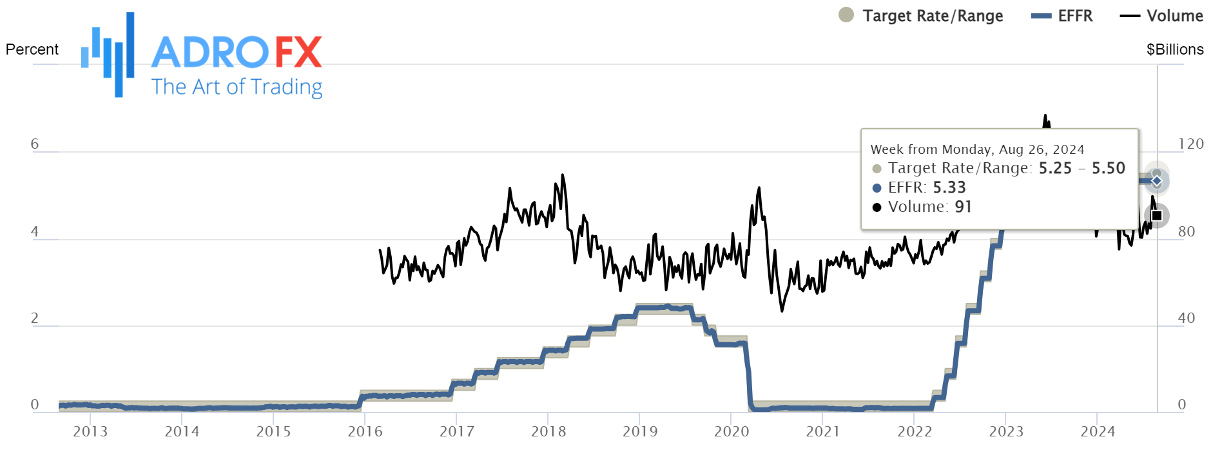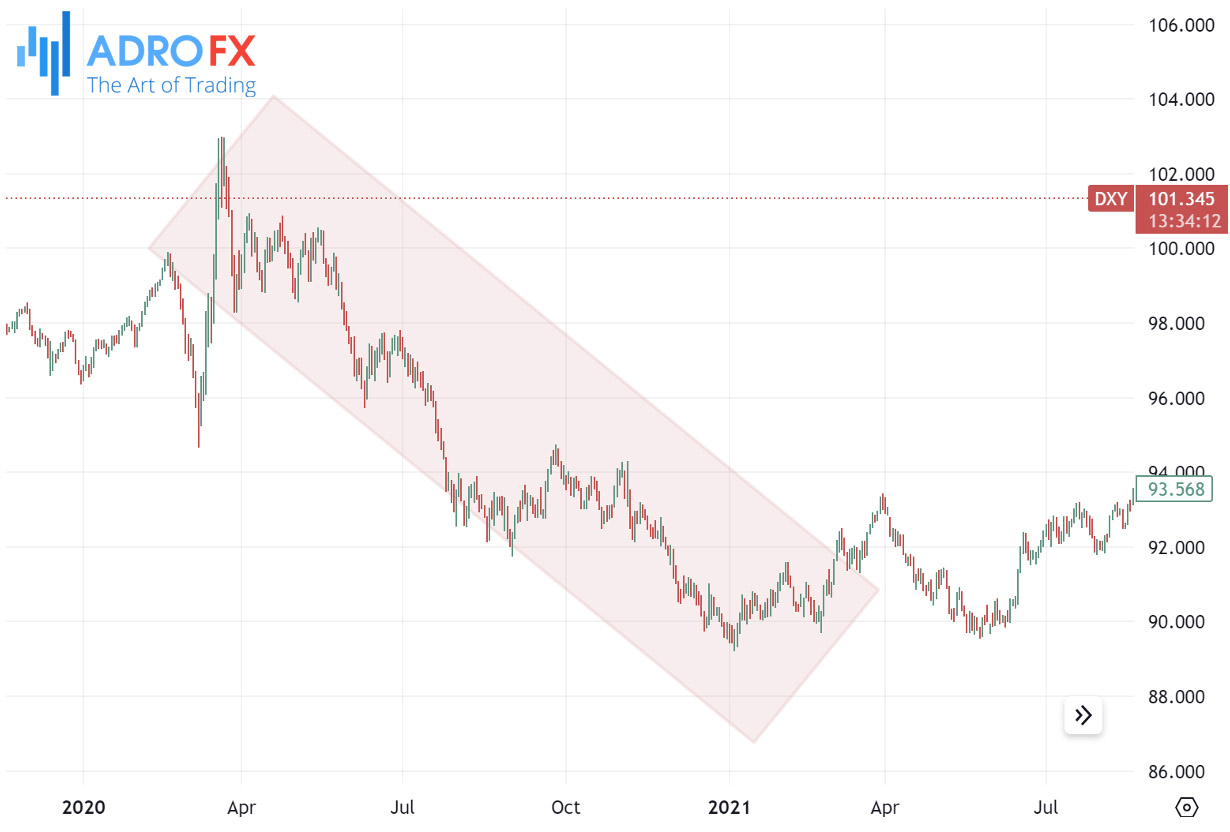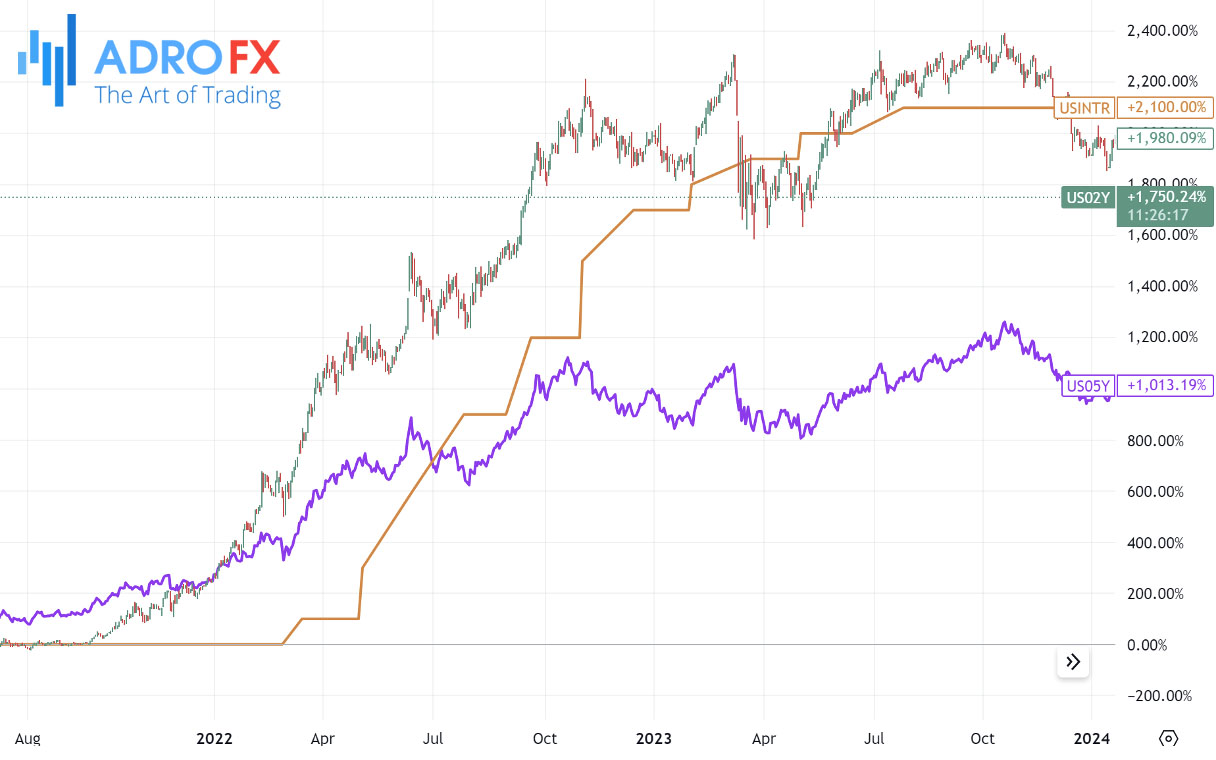How US Interest Rates Influence Global Markets: Currency Pairs, Stocks, and Strategies

US interest rates hold a critical position in the global financial system, acting as a benchmark that influences economies and markets far beyond American borders. These rates, set by the Federal Reserve, dictate the cost of borrowing and the return on savings, shaping consumer spending, business investments, and economic growth. However, their impact doesn’t stop at the US economy. In a world where financial markets are deeply interconnected, changes in US interest rates send shockwaves across global markets, affecting everything from currency pairs to stock prices.
When the Federal Reserve raises or lowers interest rates, the effects are immediately felt across the globe. A rate hike typically strengthens the US dollar, making it more attractive to investors, while a rate cut can weaken the currency. These movements influence major currency pairs like EUR/USD and USD/JPY, altering trade balances and investment flows. Simultaneously, stock markets react to interest rate changes as investors adjust their portfolios in response to the shifting cost of capital. Whether it’s a rally in financial stocks following a rate increase or a sell-off in emerging market equities, US interest rates are a driving force behind market trends worldwide.
The Role of US Interest Rates
US interest rates are more than just a domestic economic tool - they are a key driver of global financial stability. The Federal Reserve, the central bank responsible for setting these rates, plays a pivotal role in shaping monetary policy not only in the US but also in influencing other central banks and financial markets worldwide. When the Fed makes an interest rate decision, whether to curb inflation or stimulate growth, it sends signals to investors and policymakers across the globe. These decisions are closely monitored, as they can lead to significant shifts in capital flows, exchange rates, and investment strategies.

New York Fed, effective federal funds rate (as of August 2024)
For example, a rise in US interest rates often attracts foreign investment into US assets, leading to a stronger dollar and exerting pressure on other currencies. This can result in higher borrowing costs for emerging markets, which may struggle to service their dollar-denominated debts. On the other hand, lower US interest rates can stimulate global liquidity, encouraging investments in riskier assets, including foreign equities and bonds. Thus, the Federal Reserve's decisions reverberate through the global economy, influencing everything from the price of commodities to the stability of financial markets in distant countries.
Also read: Money Talks: Inside the Operations of the Federal Reserve System
Inflation Considerations
Inflation is a critical factor in the Fed's decision-making process regarding interest rates. When inflation is high, the Fed typically raises interest rates to cool down the economy and bring prices under control. Conversely, if inflation is low or the economy is sluggish, the Fed might cut rates to stimulate spending and investment. However, the relationship between interest rates and inflation can create a delicate balancing act. Lowering rates too much or too quickly could fuel inflation, eroding purchasing power and destabilizing markets.

The US Dollar Currency Index (DXY) drop during the coronavirus pandemic when the Fed started raising interest rate
For global investors, inflation in the US can also influence currency values. If inflation rises while interest rates remain low, the US dollar may weaken, as investors seek higher returns in other currencies. This could lead to shifts in currency pairs like EUR/USD and USD/JPY, where the dollar might lose ground. Additionally, inflation concerns can create volatility in commodities, such as gold and oil, as these assets are often seen as hedges against inflation.
Impact on Currency Pairs
US interest rates have a direct and profound impact on the value of the US dollar (USD) against other major currencies. When the Federal Reserve raises interest rates, the USD generally strengthens. This is because higher interest rates offer better returns on investments denominated in dollars, attracting capital inflows from around the world. As demand for the USD rises, currency pairs like EUR/USD and GBP/USD tend to move in favor of the dollar, making these currencies weaker relative to the USD. Conversely, when the Fed lowers interest rates, the dollar typically weakens, as lower returns prompt investors to seek better opportunities elsewhere, affecting major currency pairs by driving the value of other currencies higher against the USD.
Interest rate differentials between countries also create opportunities for the carry trade, a strategy where investors borrow in currencies with low-interest rates and invest in currencies offering higher returns. For example, if US interest rates are significantly higher than those in Japan, investors might borrow in Japanese yen (JPY) at low rates and invest in US dollars to earn higher yields. This practice can further strengthen the USD against the JPY and other low-interest-rate currencies, creating additional volatility in currency markets. However, carry trades can be risky, especially in times of market uncertainty or when central banks change their monetary policies unexpectedly.
Impact on Global Stock Markets
Changes in US interest rates also ripple through global stock markets, influencing investor behavior and asset allocation. When the Federal Reserve raises interest rates, it often leads to higher yields on US Treasury bonds, making them more attractive to investors seeking stable returns. As a result, capital may flow out of equities, particularly in riskier markets like emerging economies, and into bonds. This shift can lead to declines in stock prices, especially in sectors that are more sensitive to interest rates, such as technology and consumer discretionary, which rely heavily on borrowing for growth.

The chart shows a surge in Treasury yields (US05Y and US02Y) as the Fed kept increasing interest rate (USINTR) throughout 2022-2023
However, not all sectors are equally affected by rising interest rates. Financial stocks, particularly banks, often benefit from higher rates as they can charge more for loans, boosting their profit margins. On the other hand, sectors like utilities and real estate, which rely on stable cash flows and heavy debt, may suffer as their borrowing costs increase. Therefore, the impact of US interest rates on global stock markets is multifaceted, influencing both broad market trends and sector-specific performance. Investors need to be mindful of these dynamics when adjusting their portfolios in response to interest rate changes.
Possible Market Reactions to a Fed Rate Cut
If the Federal Reserve decides to cut interest rates at the next meeting, the global markets could react in several ways:
- Stock Market Rally
Lower interest rates generally make borrowing cheaper for businesses, encouraging investment and boosting economic activity. This can lead to a rally in the stock market, particularly in growth sectors like technology and consumer discretionary. Investors may also seek out dividend-paying stocks, as lower rates reduce the appeal of bonds and other fixed-income assets.
- Weaker US Dollar
A rate cut typically weakens the US dollar, as lower interest rates make the currency less attractive to investors seeking higher yields. This could lead to a depreciation of the dollar against other major currencies, benefiting exporters and companies with significant foreign earnings but potentially hurting importers.
- Increased Inflation Risk
While a rate cut can stimulate economic growth, it can also increase the risk of inflation if demand outpaces supply. Investors may turn to inflation-protected securities or commodities like gold as a hedge against rising prices.
- Impact on Emerging Markets
Emerging markets often benefit from lower US interest rates, as it reduces their borrowing costs and encourages investment in their higher-yielding assets. However, a weaker dollar can also lead to currency appreciation in these markets, which could impact their export competitiveness.
- Bond Market Dynamics
In the bond market, a Fed rate cut can lead to lower yields, particularly on short-term government securities. This may cause investors to shift toward longer-term bonds or riskier assets in search of better returns, further affecting market dynamics.
By including these additional insights, you can offer a more comprehensive view of how US interest rates impact global markets, particularly in the context of inflation and potential rate cuts.
Also read: What You Need To Know About Market Rallies
Managing Volatility in Your Portfolio
In a dynamic interest rate environment, managing volatility in your investment portfolio becomes essential to mitigate risks and protect your returns. One of the key strategies to navigate this landscape is diversification. By spreading your investments across different asset classes - such as stocks, bonds, commodities, and currencies - you can reduce the impact of interest rate fluctuations on your overall portfolio. For instance, when US interest rates rise, bonds may become more attractive, but stocks, especially in certain sectors, might face downward pressure. A diversified portfolio can help balance these effects and provide more stable returns.
Another critical tool is currency hedging, particularly for investors exposed to foreign markets. When US interest rates increase, the dollar strengthens, which can erode the value of investments denominated in other currencies. Implementing hedging strategies - such as using currency futures or options - can protect your portfolio from adverse currency movements. Additionally, focusing on defensive stocks, like those in utilities or consumer staples, can provide a buffer against volatility. These companies tend to offer stable earnings and dividends, making them less sensitive to economic cycles and interest rate changes.
By employing these strategies - diversification, currency hedging, and a focus on defensive stocks - you can better manage risk and navigate the uncertainties that come with fluctuating interest rates.
Strategies for Navigating Interest Rate Cuts and Hikes
Interest rate changes present both opportunities and risks for investors. Whether the Federal Reserve is hiking rates to combat inflation or cutting them to stimulate the economy, knowing how to adjust your strategy can help you protect your portfolio and capitalize on market movements.
During Interest Rate Hikes
- Shift to Bonds and Fixed-Income Assets
As interest rates rise, bonds, particularly short-term ones, become more attractive due to their higher yields. Consider increasing your exposure to bonds and other fixed-income securities to benefit from rising rates.
- Focus on Financial Stocks
Banks and financial institutions often benefit from higher rates, as they can charge more for loans. Allocating more of your portfolio to financial stocks can help you capture this upside.
- Reduce Exposure to High-Growth Stocks
High-growth sectors, like technology, often suffer during rate hikes due to their reliance on borrowing. Reducing exposure to these sectors can help mitigate risk.
During Interest Rate Cuts
- Increase Equity Exposure
Rate cuts can boost stock markets, especially growth-oriented sectors like technology and consumer discretionary. Consider increasing your equity exposure during rate cuts to take advantage of rising stock prices.
- Look for Dividend-Paying Stocks
With lower interest rates, dividend-paying stocks become more attractive as investors seek yield. Companies with strong cash flows and reliable dividends can provide stable income in a low-rate environment.
- Consider Real Estate Investments
Lower rates can lead to cheaper borrowing costs, making real estate investments more attractive. REITs and real estate stocks often perform well in a rate-cut environment.
By adjusting your portfolio to reflect the current interest rate environment, you can better position yourself to protect your investments and take advantage of market opportunities.
Final Thoughts
Understanding and responding to US interest rate changes is crucial for investors looking to safeguard and grow their portfolios. As we’ve discussed, shifts in interest rates can influence everything from currency pairs to global stock markets, making it essential to stay informed and adapt your strategies accordingly. By incorporating risk management techniques like diversification, currency hedging, and investing in defensive stocks, you can mitigate the impact of interest rate volatility.
If you’re looking to capitalize on these market movements, AdroFx offers a range of trading opportunities tailored to help you navigate the complexities of the global financial landscape. Stay ahead of the curve with AdroFx, where you can take advantage of real-time insights and sophisticated trading tools.
About AdroFx
Established in 2018, AdroFx is known for its high technology and its ability to deliver high-quality brokerage services in more than 200 countries around the world. AdroFx makes every effort to keep its customers satisfied and to meet all the trading needs of any trader. With the five types of trading accounts, we have all it takes to fit any traders` needs and styles. The company provides access to 115+ trading instruments, including currencies, metals, stocks, and cryptocurrencies, which make it possible to make the most out of trading on the financial markets. Considering all the above, AdroFx is the perfect variant for anyone who doesn't settle for less than the best.










